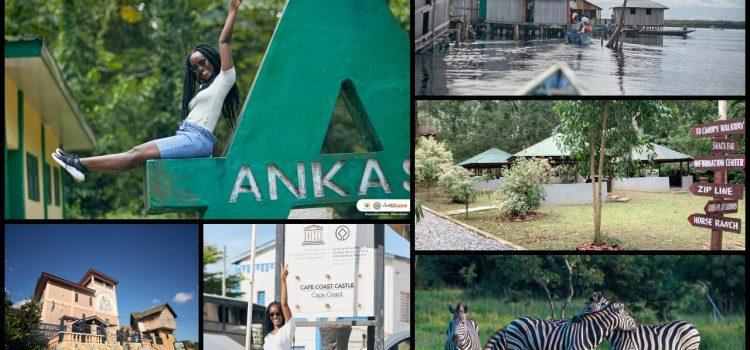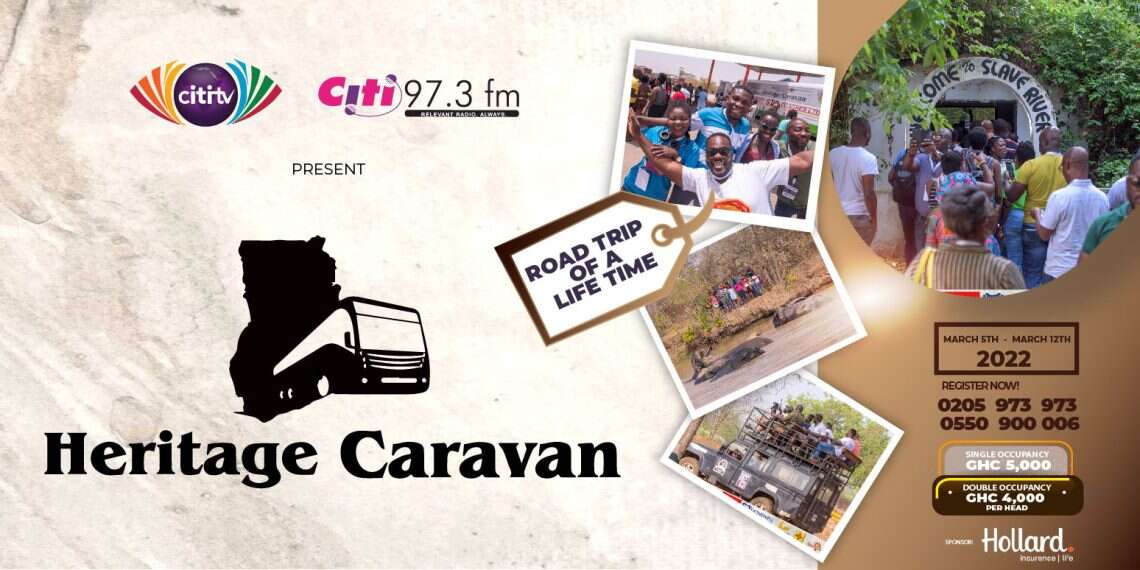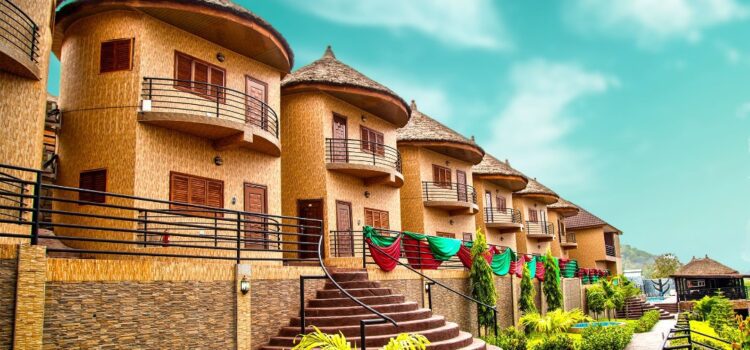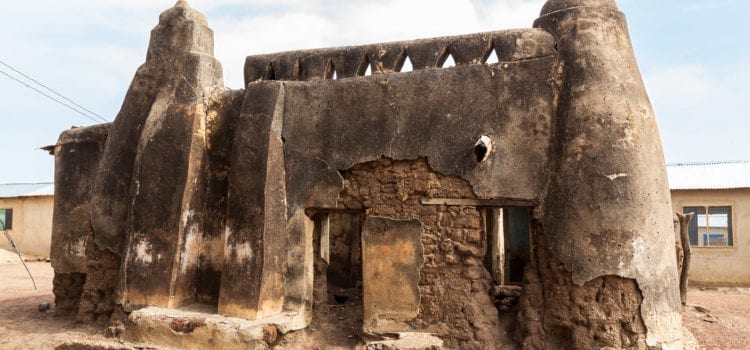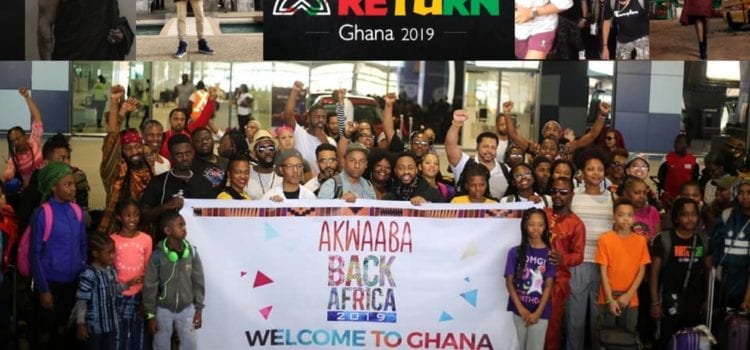2022 Edition of CitiFm/CitiTV Heritage Caravan slated for March 5-12
The biggest and most exciting road trip of a lifetime organised by Citi FM with support from Citi TV, Heritage Caravan, is back with a bang! The Caravan, which would have been in its 7th year running since its inception in 2016, had to be put on hold in 2021, due to the Covid-19 pandemic and its uncertainties.
The Heritage Caravan, which has had impressive patronage so far, will be touring 8 regions of Ghana for 7 days; from March 5, to March 12, 2022, in the most epic way.

This year, the Caravan will start from the Greater Accra Region, and continue to the Central, Western, Bono, Northern, Upper East, Ashanti, and the Eastern Regions. It will make stops at historical sites in these regions, and patrons will have the opportunity to learn about compelling facts, and amazing cultural discoveries during these visits.
Aside from the education, exploration, and adventure anticipated for this year’s road trip, patrons will also be taken out on the razzle with a lineup of activities like a Bonfire Night, Boboobo display, a mini durbar with lots of local dishes and drinks, and the chance to form life-long bonds with other entrants.
Fees
Interested participants are expected to pay an affordable fee of GH¢5,000 for single occupancy and ¢4,000 for double occupancy.
This discounted fee covers, transportation, accommodation, breakfast, dinner, tour site fees, and all special activities.
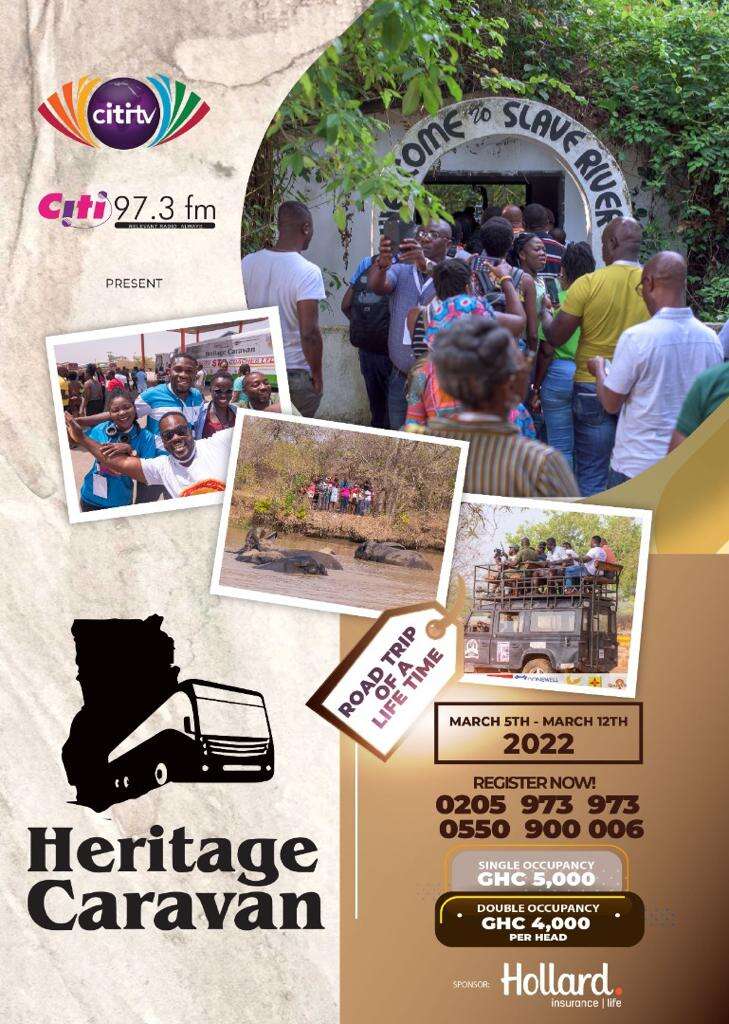
How to register
Participants for this year’s edition can follow the Heritage Caravan link on www.citinewsroom.com to register, or call 0205973973 or 0550900006 for more information.
Interested persons are required to be vaccinated to be eligible for the trip.
About Heritage Caravan
The Heritage Caravan is a week-long road trip, which takes participants on a tour to various regions in Ghana, with the aim of experiencing the rich culture, dynamic traditions, and historical excerpts of the Ghanaian heritage.
Since its inception in 2016, the Caravan has been to all regions of the country, visiting tour sites like the Mole National Park, the Military Museum in Ashanti Region, the Slave Memorial at Assin Manso, Elmina Castle, the Larabanga Mosque – one of Ghana’s architectural masterpieces, the village on stilts; Nzulezu, and the crocodile pond at Paga amongst others.
Ho, Your Mice Destination In Ghana
Accra hosts most of the MICE events in Ghana. However, the limited capacities of the major venues in Accra such as the International Conference Center; traffic congestion, high crime rate and other reasons, Accra is becoming less attractive to Global MICE events. This presents an opportunity for the country to develop other cities as alternatives to take advantage of the value of the MICE industry. Ghana’s potential to host MICE has further been given credence with the hosting of the Secretariat of the African Continental Free Trade Area (AfCFTA). Ghana can learn from South Korea that has developed ten (10) other MICE cities that offer tailored events to business travelers aside its capital, Seoul. Daejeon, for instance, hosts technology related MICE events while Jeju opens its doors to cultural and nature-related MICE events.
The global outlook of Meeting, Incentive, Convention and Exhibition (MICE) industry generated $752 billion in revenue in 2016 and is projected to reach $1,439.3 billion by 2025. Many cities across the world are strategically positioned as the MICE destination in their regions, attracting millions of business visitors each year. Seoul, South Korea, for instance, hosted 526 meetings in 2016, up from 494 in 2015 (up 4.97%) ranking number 3 MICE city in the world according to International Meetings Statistics Report released by the Union of International Associations (UIA). Sadly, only about 2% of the global $7 trillion value of MICE industry is captured by African cities. Cape Town, Nairobi, Rabat, Cairo, Kigali are the most preferred destinations MICE in Africa.
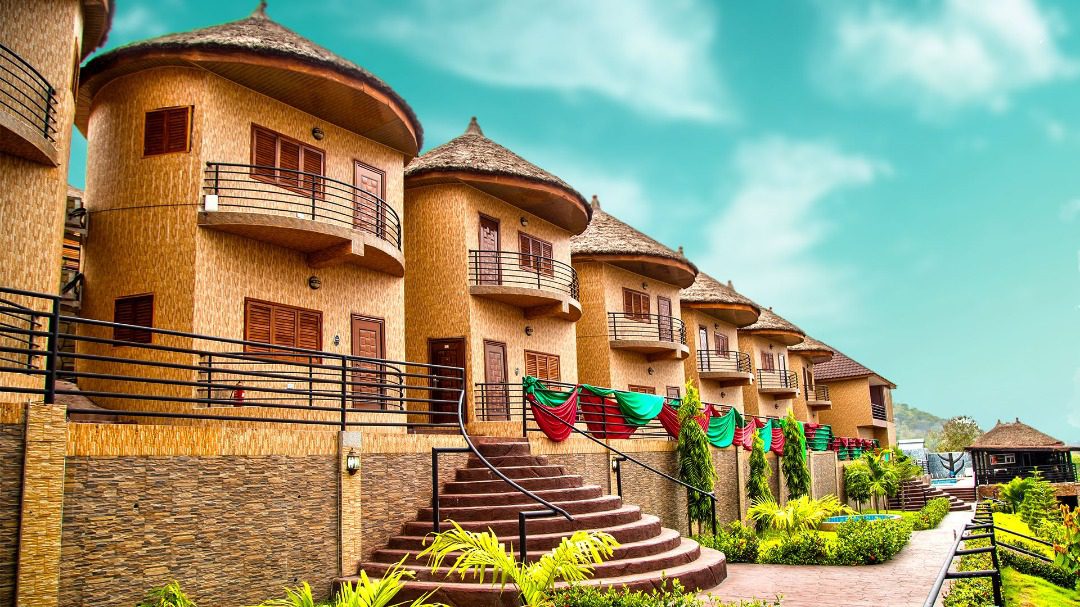
MICE are big business and play an important role in supporting other businesses in the host city. MICE promote investment, trade, communications, and technology. It brings education and professional development to a city and creates several jobs. According to data from the Rwanda Development Board, hosting the 27th African Union Summit pumped an estimated $4.2 million into the Rwandan economy while some $2.4 million was received from the World Economic Forum. The MICE industry when developed can create the jobs much needed to deal with the growing unemployment in the country.
Ho, the regional capital of the Volta Region, has a huge tourism and MICE potential waiting to be tapped. Nested in between Adaklu Mountain and the Galenukui Mountains or Togo-Atakora Range, bustling with cool hostels and natural destinations, Ho can best be described as the oxygen capital of Ghana. Ho offers a unique blend of business, convenience, hospitality, and leisure, suitable for a MICE destination. Here are some reasons why Ho has the potential as a MICE destination in Ghana and should be given the needed attention.
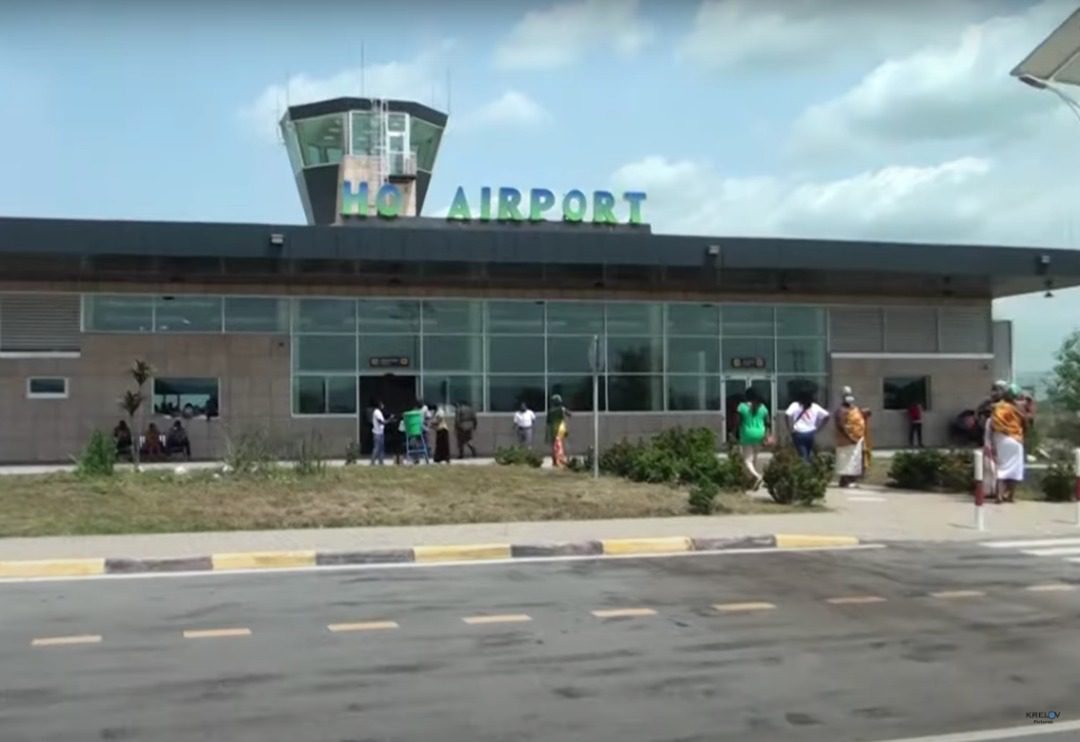 Ho Airport
Ho Airport
Volta Serene Hotel, Kabakaba Hill, Ho
A Welcoming City
“Woezor” means welcome in Ewe language, the main dialect of Ho and the Volta Region. The city has everything one will need to have a productive, comfortable and awesome MICE experience. Ho has an excellent record in public safety and security. Business travelers can walk around freely at night without worrying about their safety. The quality of life is also high with a clean environment, green undulating landscapes, unpolluted air, state-of-the-art health facilities and many more. Ho can boost of a potential “4-star hotel” (Volta Serene Hotel) with 160 rooms, a 3-Star (Chances Hotel) with 180 rooms, three 2-Star Hotels (Sky Plus, Freedom & Hotel Stevens) and several other decent hotels that can accommodate hundreds of business travelers in the city offering over 953 rooms and 1,113 beds. With a booming student population as a result of the establishment of the University of Health and Allied Sciences in the city, several hostel facilities are springing up that can offer additional rooms for low budget MICE events at specific times of the year. There are unique locations available for development into various categories of hotels to accommodate the increasing inflows when Ho becomes the MICE destination in Ghana. Most importantly, the people are welcoming and offer great services that would make MICE events memorable.
A convenient transport system
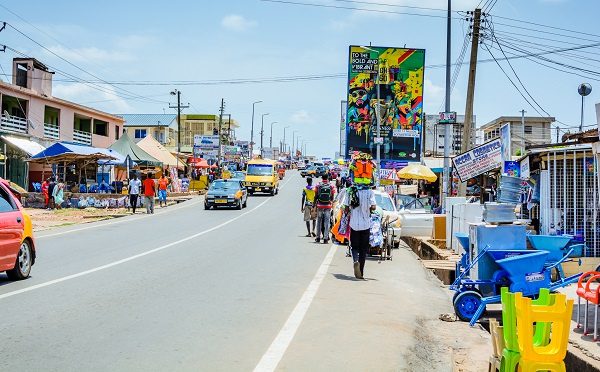
Asphalted Road, Ho
Ho is one of the closest regional capitals to Accra. It is just about two hours’ drive from the Accra Airport. With the completion of the Ho aerodrome, it will even become faster to connect to Accra.
Getting stuck in traffic and finding it difficult to find your way around a city makes it less ideal for a great MICE destination. It is very easy to move around in Ho since there is virtually no traffic jam during normal days except on market days when the city experience some minimal congestion around the main lorry station and the main market area as well as its environs. Clean and affordable town-running Taxi services with flat rates dominate the public transport system. The internal road network is well paved while most eateries and busy areas are within walking distances.
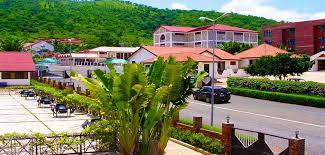
The Way Forward
Although Ho is strategically placed to become Ghana’s preferred MICE destination, deliberate efforts must be made on the part of government through the Ministry of Tourism, Arts and Culture and the local authorities to invest and market the city. The first step is to recognize the MICE opportunity in Ho and then craft a clear strategy to exploit its potential. The Korean Government in 2009 officially identified the MICE Industry as one of the 17 New Growth Engine Industries of their economy in a bid to transition from its past of a manufacturing led growth. Last year, the Seoul Metropolitan Government allocated a KRW 10 billion to an aggressive “see-you-in-Seoul” plan to elevate the city’s MICE industry, which it identifies as a future core industry. The above and the remarkable story of MICE industry in Rwanda are examples of how priority and strategy at all levels is required to reap the benefits of MICE industry.
Spectacular event spaces make MICE events unforgettable. Ho has some event spaces; the GNAT Hall, the Afeti Multipurpose Auditorium at the Ho Technical University, The Jubilee Park, Praize City Point & Kill off the Kpetoe Road, and the CNC Auditorium that can take over 3000 people as well as the Conference Halls of the Hotels in the city. The limited capacity notwithstanding, Ho has vast lands available in the city for the constructions of mega multipurpose conventions and auditoriums that can host all types of global MICE events.
Weizor!!! Next time you are in “the oxygen capital” for a meeting, conference or any other activity to building camaraderie among staff, workers and teams outside; Ho offers open parks that can host camps, aerobic sessions and open games. For hiking lovers, Adaklu Mountain and Kabakaba/Galenkui hills offer an adrenalin-filled climbing experience. Also, Mount Gemi located at Amedzofe which is about 30 minutes’ drive from Ho, offers another thrilling hiking experience for mountain lovers. Photography and wildlife enthusiasts would find the Kalakpa Game and Resource Reserve at Abutia near Ho and the famous Tafi Atome Monkey Sanctuary and Cultural Village breathtaking. Nightlife in Ho bustles with several activities in clubs, pubs and food joints. Notable ones are Rabazey Spot, Mirage, Nogora Junction, Amdel, White House, Depot View, KCS Fast Foods and to mention a few. There are several local eateries popularly known as “Chop Bars” where one can sample local foods be it worpkle, fufu, banku, etc with assorted soups and stews- Agbenorxevi Chop Bar, Obaapa Canteen, Victorious Hill View Chop Bar, Bush Canteen, Fufu Engineers, etc. Water and boat experiences at Sogakope are only about 35 minutes’ drive from Ho. It offers several water-based games and fun activities including a Spa on the Volta River. There is also the Volta Regional Museum in the center of Ho, which displays the rich history and culture of the people of the Volta Region.
By: Eric Tackie Tawiah Ankrah / Senior Standard & Quality Assurance Officer, GTA, Ho
Article: In The Rocks Of Shai
The Rock Of Ages is a title attributed to the one and only almighty God because rocks represent something very powerful, something that has been in existence for a very long time, just as the Rock of Gibraltar is also attributed to the same God depicting his awesomeness and greatness looking at the huge nature of the solid rocks.
So one can confidently say that when the word Rock which is translated in the Fante language as “Obwo” or the Twi language as “3buor” or as the Ewe’s will call it “3kp3” is mentioned, there is a certain level of pride, greatness and prestige that it comes with.
Talking of Rocks, let’s come home to the subject matter. Let’s take your mind unto the huge (enormous) rocks at Shai Hills and the historic events that took place in the era of the ancient days.
Let’s Tour Ghana Club inaugurated under the Ghana Tourism Authority (GTA) travelled on a tour to the humble abode of Shai Hills at Dodowa in the Greater Accra Region on 27th March, 2021 which was a Saturday to experience the Culture and history that took place during the olden days before independence.
They were well received by the “Tour Guide” Mr. Micheal Kumah who took them around to witness the wonderful history and it’s explanations that it came with.
It was now time to enter the gigantic solid rocks as Mr. Micheal Kumah took his time to thoroughly explain the history of living that took place in the rocks.
According to him, in 1892, the Shai people were forced to leave the rocks by their Colonial Masters being the British.
After that, they re set up Dodowa, Agormeda etc. and each year in September, a homage is being paid to the ancestral home to perform their festivals known as “Many3”.
When they left, some bats took over the cave. A foul smell can be sensed when one enters the rocks and gets to that point, and that is because of the existence and migration of the “INSECT BATS”.
According to medical reports, if one is an asthmatic patient, it is not advisable for them to enter that entry point in the rocks unless he or she has his or her inhaler.
Mr. Kumah stressed on that, he doesn’t allow and will never allow asthmatic patients entry at that point of the experience. This is not to prevent them from enjoying the fun and experience but rather protecting their lives.
He also narrated the history of the then Kings who used a section of the cave as their Palace in decision making.
They used to gather there and make decisions concerning puberty rites of the ladies as at that time.
In those days, there was no ladder mounted to the top of the rocks that allowed the bodyguards or people to climb to the top so one will ask, how then were his bodyguards able to climb to the the top of the heavy rocks? The answer was straight forward. They used the back hole, a section in the rocks that allowed them entry on top of the rocks.
He further added that, the stairway was recently mounted because Tourism lovers will want to experience how it feels to be on the top of the mounataineous rocks and thereby can’t use the entry (hole through the backyard of the rocks) the bodyguards used because it was very risky. They have to ensure that every Tourist’s life is protected like an egg in the palm on and in the rocks.
It is their sole responsibility to keep each and everyone in their premises alive till they exit their caves (rocks) and premises in the wild life reserve.
They can’t afford to record loss of lives in the quest of adventure and education about the history and explorations of the beautiful scenery at Shai Hills.
In conclusion, Mr. Micheal Kumah added that, in descending the top of the rock after the sight seeing returning using the mounted metallic ladder, it is always best and advisable to descend backwards and not forward because the way the metallic staircase is constructed and mounted, if one doesn’t take care and descend with their front, the probability of slipping and injuring oneself is very high which can lead to death.
By: Isaac Kofi Arthur, NSS Personnel/GTA
Ghana’s Lost Historic Mosques
This is an article by Baptist Missionary who explored the historic sudanese mosques in the northern part of Ghana. The article explores the origins of the mosques to why some have disappeared
This is the last in of a series of posts about Ghana’s only six remaining historic mud mosques built in the Sudano-Sahelian architectural style.
When I embarked on my project to visit the last of Ghana’s mud mosques, I thought I would be seeing nine according to the Ghana Museum & Monuments Board website. Unfortunately, there are only six still standing and in use: Larabanga, Banda Nkwanta, Nakore, Maluwe, Bole, Wuriyanga.
How Many Mud Mosques did Gold Coast/Ghana Have?
 A century ago, every mosque in the north was made of mud simply because that was the primary material used. Look through archival images from the early colonial era and every mosque is some sort of variation on the Sudano-Sahelian* style.
A century ago, every mosque in the north was made of mud simply because that was the primary material used. Look through archival images from the early colonial era and every mosque is some sort of variation on the Sudano-Sahelian* style.
Rudolph Fisch’s images of Mamprugu in 1910 show the Gambaga mosque as a white-washed mud structure in the Sudanic style. Famed American modernist photographer Paul Strand shot a mud mosque in Tanina, Ghana on his 1964 photographic tour of the country that culminated in the incredible book “Ghana: An African Portrait.” Additionally the British National Archives contain images of mud mosques in 19th century Bimtuku (though it’s hard to determine where that village is and it’s possible the images are of Boundoukou, Cȏte d’Ivoire).
Why Have Ghana’s Mud Mosques Disappeared?
There are several factors that have made these mud mosques so rare today. The primary reasons are of function:
- This mud architecture requires thick walls and supports which don’t actually leave much space inside for worshippers. A mosque like Nakore‘s could only hold about 25 people during prayers. The large Woriyanga mud mosque might accommodate 60 or 70 at most. As followers of Islam increased in number in northern Ghana, the mud style of building was no longer practical.
- Newer materials like zinc roofing and cement cinder blocks allowed for much larger mosques that were less labor intensive and required less maintenance (mud mosques need to be re-plastered annually).
- The art of mud construction has been lost as the newer generations of builders are using the newer aforementioned materials.
And finally, the mosques disappeared because their style fell out of fashion. The old, “primitive” styles were abandoned for modern, “civilized” buildings modeled after the modern mosques seen in images from the Middle East and North Africa.
It’s only in recent years that interest in these mud mosques has been revived as they are now seen as historical landmarks and cultural treasures.
The Most Recent Mud Mosques to be Lost
I mentioned that I expected nine mosques but only saw six in any decent condition. Here are the ones that have recently been razed or are in pitiful ruin.
Dondoli Mosque, Wa
Named after the neighborhood in which it stood, the Dondoli mosque in Wa is hard to find. It has been abandoned and in ruin for so long that most people don’t even know what you’re talking about if you ask bystanders for directions. When we finally got directions, we had to walk through narrow, winding alleyways in the dense residential neighborhood to reach it. Its lack of visibility has probably hurt its chances of being restored as a historic and tourist attraction.
Luck would have it that when I visited the crumbling structure in April 2018, an old man passing by stopped to chat with us. His name was Malaam Fuseini and he explained that his great-grandfather Karimafa migrated to Wa from Mali and built the mosque. Fuseini claimed that the mosque was originally named after its founder – Karimafa Mosque.
Another interesting story Fuseini shared was that his grandfather Lumaam Mahama took a pilgrimage to Mecca. He says it took him 22 years to walk and work his way to Mecca and back. When he returned he brought with him a complete Qur’an for the community.
Today, the Dondoli neighborhood (also known as Fa Muni?) has the standard, large, block mosque to serve its members. At the time of my visit they were also in the middle of constructing a muslim community center next to the old, mud mosque to hold meetings, weddings and other community events.

Wechiau Historic Mosque
The old mud mosque in Wechiau is barely standing today and no longer in use. It’s a shame because with the nearby Wechiau Hippo Sanctuary bringing in visitors, this architecturally unique structure could generate some income from tourists. As it stands in 2018, it looks pretty much irreparable.
Of all the mud mosques I’ve seen in Ghana, this one had a most unique design that seems to be a mashup of both the Sudanic and Djenne architectural styles. It had buttresses like Sudanic mosques but only one tower (now collapsed) like the Djenne style seen in Woriyanga, Ghana. Looking at the interior, it seems that the columns were much too small and spaced out to support the flat mud roof. After the initial collapse of the roof, it was replaced with zinc but eventually the building fell in to disuse as the newer, larger mosque was built just behind it. Traditionally, unused mosques are not demolished but instead are just left to elements.
I’ve searched online for images of the mosque before it had fallen into disrepair but couldn’t find anything. It may be that it has been abandoned for a few decades.
Dakrupe
This small village between Bole and Larabanga is still listed on the GMMB website as having a mosque. However, the Maluwe mosque’s imam informed me that it was destroyed nearly a decade ago to make room for a larger, modern cinder-block mosque. I’ve not been able to find any photographic evidence online of the Dakrupe mosque.
I should also note that the Maluwe imam mentioned that the village of Mandari also used to have a mud mosque that was destroyed in his lifetime. Again, I haven’t been able to confirm that or find any record of its existence.
“Sudano-Sahelian” can be a confusing term today because it sounds like it is associated with the East African country of Sudan. The term however comes from “French Sudan” which was France’s colonial territory in West Africa from around 1880 to the 1960s. The French, in turn, used the name “Sudan” because West Africa, south of the Sahara and north of the forested coastal regions, features a geographical region known as Sudanian savannah (or Sudanian grassland). Therefore, the architecture of Ghana’s Sudano-Sahelian mud mosques are not related to any tradition from Sudan or East Africa.
Source: William Haun
KOFI AKPABLI WRITES, ‘PANAFEST IN THE YEAR OF RETURN’
Powered by a development agenda, and as old as Ghana’s democratic dispensation, PANAFEST is undoubtedly a key stakeholder in the “Year of Return“. The festival emerged on the Ghanaian scene in the early 1990s with a message, which has remained relevant- celebrating the essence of black people and re-uniting Africans with those in the diaspora.

Today, not only has the event demonstrated staying power, it has remained the reference point for African Diasporans returning home to the motherland. More than that, PANAFEST has sustained diverse platforms as well as partnerships to confront the rather difficult conversations around Africa and the Trans-Atlantic Slave Trade.
Marcus Mosiah Garvey is famed for the idea that all people of African descent should move back to the continent to partake in the development process. Since then, successive Heads of State in Ghana have initiated actions and policies to attract Diasporans back to Ghana. In his independence speech, Osagyefo Kwame Nkrumah envisioned an African liberation anchored on the idea of people of African descent coming back. Ghana, as a result, is the home and resting place of several Pan Africanists, most famous among whom are W.E.B. DuBois and George Padmore.
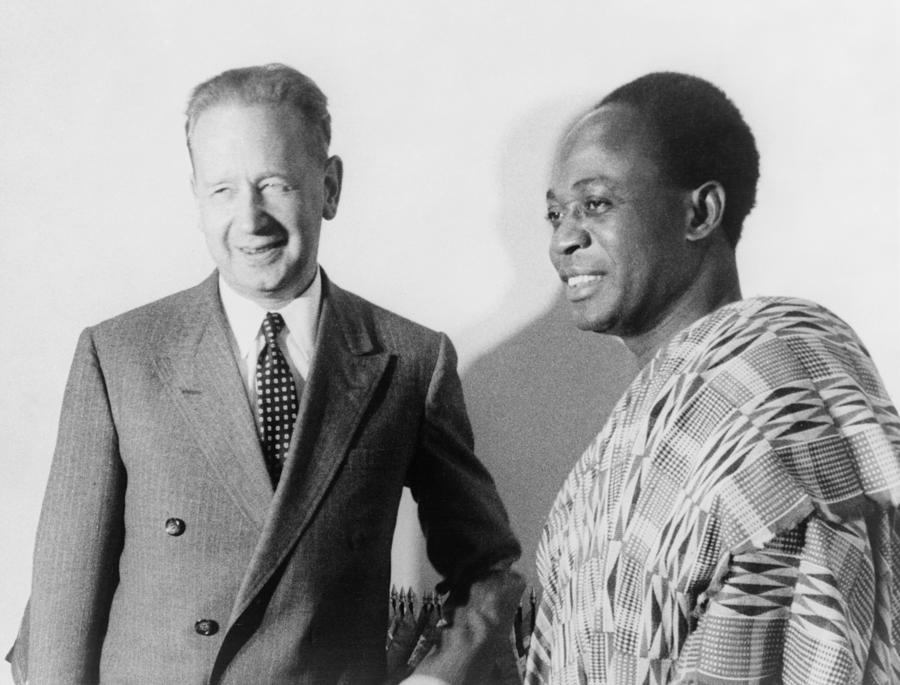
Another example is the Immigration Act of 2000 under the Rawlings regime which provides for a right of abode for any “Person of African descent in the Diaspora” to travel to and from the country without hindrance.
By declaring 2019 as the “Year of Return,’’ President Akufo-Addo seeks to reinforce Ghana’s credential as the hub of Pan Africanism. Coincidentally, the ‘’Year of Return‘’ is a celebratory year for the biennial PANAFEST event. This article broadens the perspective to prove that the “Year of Return’’ and PANAFEST itself are reverberations, set to roll by precursors within the local as well as a global arena.
Take local literature. In the 1960s when Ama Ata Aidoo wrote the Dilemma of a Ghost, a play that was first put up at Commonwealth Hall, she was a proponent in the movement that was generating debate on the place of African Americans in Ghanaian society.
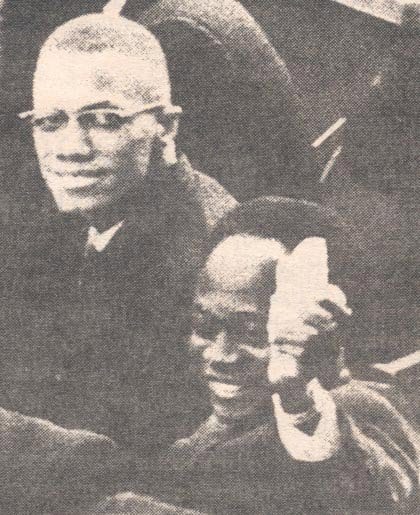
When in 2013, the United Nations Declared 2015-2024 as the ‘’International Decade for People of African Descent,’’ many communities in Africa and within its Diaspora might have yawned it away as another officious sloganeering. To cap it neatly, the theme for the ten-year celebration is “People of African descent: recognition, justice and development.” Overambitious and nice-sounding, huh?
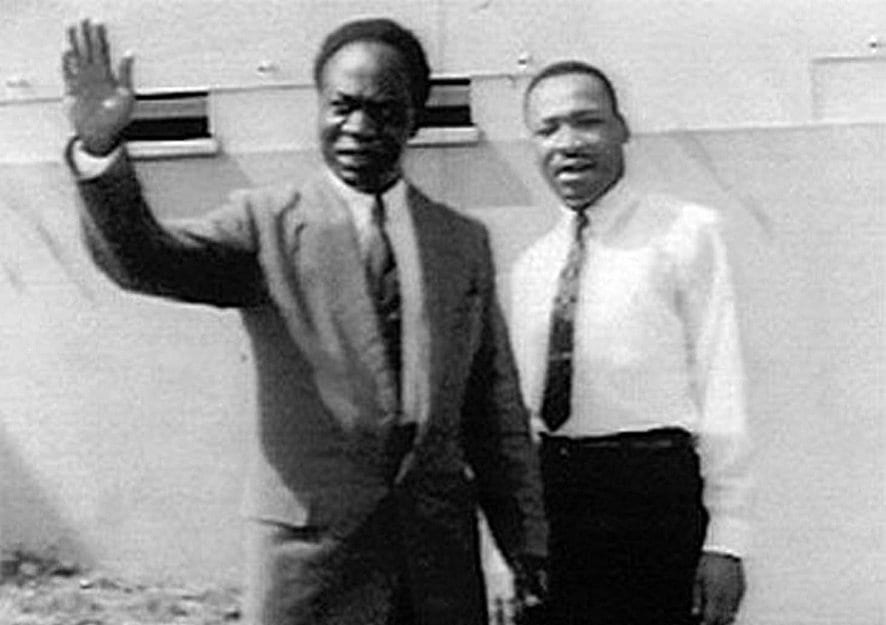
This skepticism may not be misplaced. The history and politics of the Black man’s story have become a bit too complex for one stroke of bureaucratic cosmetics to cause a difference. As America, for example, has demonstrated, racism is not stopping anytime soon and the light of black power is still not appearing at the other end of the tunnel. The foregoing and other developments notwithstanding, events seem to be coming together to generate positive discourse since the United Nations declaration.
Incidentally, Ghana’s ‘’Year of Return’’ happens midstream of this UN decade. The question is how does a forum such as PANAFEST engage? Originally dubbed the Pan African Theatre Historical Festival, the concept was birthed in the early 1990s into a world grappling with its own new and emerging status; a world, which could barely catch up on the series of epochal developments that were re-defining it.
On a February day in 1990, Mandela had walked out of jail after 27 politically charged years. A couple of months later, the Iraq War had broken with Allied Forces reminiscent of Allies in the Second World War. The prayer was that the adventure would be quick and over with. Meanwhile, a certain Charles Taylor was leading a horde of hinterland rebels on their march towards Liberia’s seat of Government.
For such a turbulent period, perhaps it was for comic relief that, Cameroun proved at the FIFA World Cup, that Africa could sting and, courtesy Roger Milla, could dance to boot. Christmas the following year gave us the shocking gift of a USSR empire crumbling to impose the uncertainties of uni-polarism after nearly five decades of a Cold War. One could surmise that the 1989 fall of the Berlin Wall had foreshadowed it. And, oh, by this time CNN had appeared on our local screen, dazzling us as the first 24-hour news channel in the world.
Also Read: CNN Lists Ghana as place to be in 2019
On the local front, Ghana was inching towards a return to democratic constitutional governance. By 1991, the nation was at the cusp of ending a decade long military rule. Around the same time, a brand new National Theatre had been built courtesy, the Chinese (Now we know that it was not quite ‘surprise, surprise’).
Well, that was the era PANAFEST chose to burst onto the scene. We were soon to learn that the concept was long coming from the visions and propositions of Efua T. Sutherland, dramatist cum Pan-Africanist whose daughter Prof. Esi Sutherland-Addy is today working with others to steer the affairs of PANAFEST.
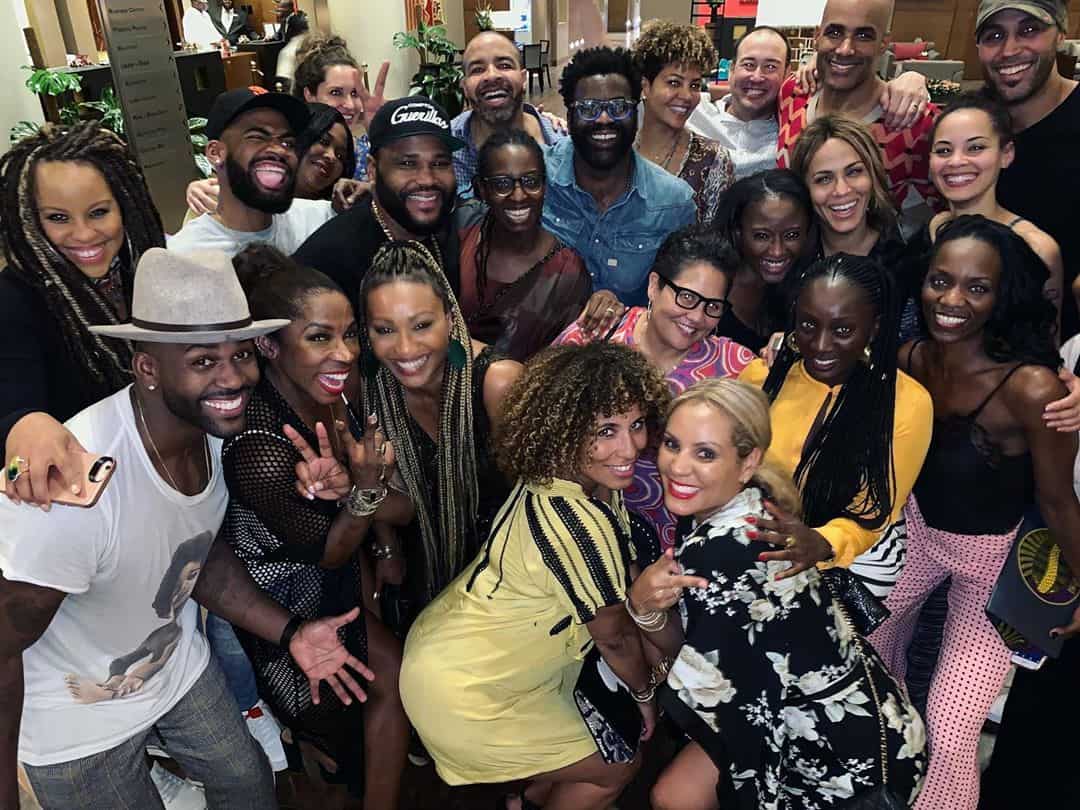
The name of the new festival sounded exotic, sexy even. There was a national playwriting contest on the theme of the Slave Trade. Under the Chairmanship of Ben Abdallah’s National Commission on Culture, drama competition included a students’ category.
That first PANAFEST was held in Elmina and Cape Coast. The winning plays were put up during the events and later followed up with run offs in Accra. The festival announced itself as essentially a cultural event dedicated to the enhancement of the ideals of Pan Africanism and the development of the African continent. Organized biennially, PANAFEST aims to establish the truth about the history of Africa and the experiences of African peoples using the vehicle of African arts and culture.
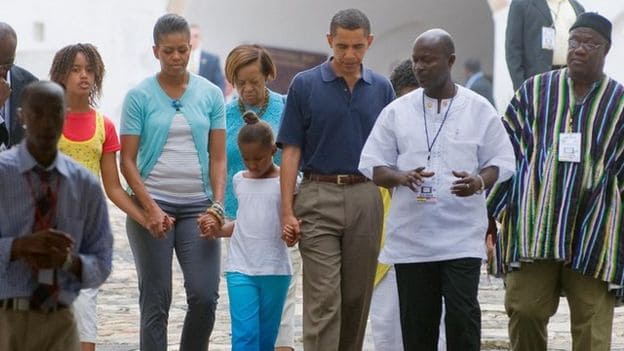
It provides a forum to promote unity between Africans on the continent and in the diaspora and to affirm the common heritage of African people the world over by defining and promoting the continent’s contribution to world civilization.
PANAFEST has since attracted a diverse assembly of people ranging from political leaders, eminent personalities, intellectuals, business concerns, investors and tourists. Central to the celebration are major international performing and visual artistes. Needless to say that popular African descended stars such as Isaac Hayes and Rita Marley not only came over to perform, they eventually made Ghana their home. In 1998 PANAFEST took on an additional ceremony, Emancipation Day making Ghana the first African nation to commemorate an African diaspora event that marks the abolition of slavery.
It is critical to note that in the past, PANAFEST has not always received adequate government support. Still, the event had stayed on course. In some of the celebratory years, the venues had gone beyond the Elmina-Cape Coast-Assin Manso triangle to include a few northern towns on the slave trade route. In 2001 for instance, an enthusiastic group of some thirty African Americans visited Paga. Led by Prof. James Small and Dr. Jeffries they visited the Nania Slave Camp.
Fresh from university and doing national service with the Ghana Tourism Authority in Bolgatanga, this writer was the liaison officer for that visit. The Paga Pio and his people honoured the home-comers with a memorable durbar. In the evening, a reception was held in the chief’s courtyard. Here, and to the amazement of onlookers, the African Americans lost all inhibitions and took over the nagla dance from the indigenous performers. They danced and danced and danced.
At the time it happened, the above episode did not capture the lens of the national media but it did capture the spirit of PANAFEST. Thankfully, this year’s PANAFEST features another homecoming expedition to the North. Outlining the focus areas of activities at the recent launch of the festival in Cape Coast it’s Executive Director Rabbi Kohain Halevi, charged Ghanaians to create a stimulating environment for the expected arrivals. He considered the relevance of the event as transcending the year period into an opportunity to examine the disruptions of African history.
In this year of return, one expects PANAFEST to lead in critical national conversations. Ghanaian society tends rather not to talk about issues related to slavery. Is it a good idea to start? Could we discuss reparations? How should we engage the castles of Elmina, Cape Coast and Fort Prinzeinstein, for instance? And why should visiting people of African descent at these Sites of Memory pay the same gate fee as the blue-eyed Caucasian from Europe?
Finally, there is the question of the youth. At both the launch of the Year of Return at Dubois Center as well as the launch of PANAFEST in Cape Coast young people stepped forward to express the same concern- ‘’what doors are our leaders opening for us?’’ One would, therefore, expect a vibrant engaging of this critical community of our human capital. To re-echo a statement by Prof. Esi Sutherland at the recent Cape Coast launch, ‘’PANAFEST is not only about the past. It is also about the future.’’
By: Kofi Akpabli
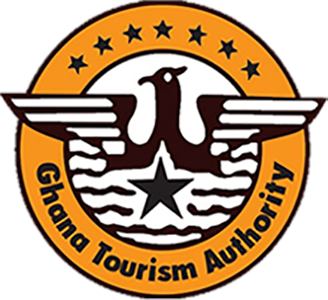

 Call Center
Call Center
